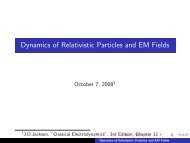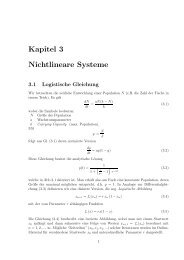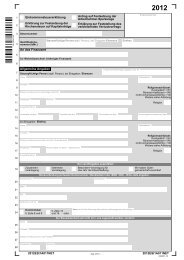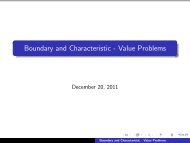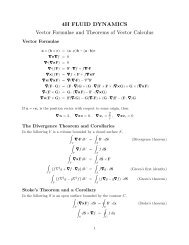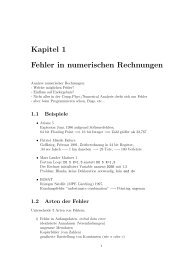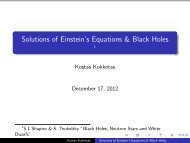Electromagnetic Waves
Electromagnetic Waves
Electromagnetic Waves
You also want an ePaper? Increase the reach of your titles
YUMPU automatically turns print PDFs into web optimized ePapers that Google loves.
Stokes Parameters<br />
The polarization content of an EM wave is known if it can be written in<br />
the form of either (18) or (24) with known coefficients (E1, E2) or<br />
(E−, E+) .<br />
In practice, the converse problem arises i.e. given a wave of the form (6),<br />
how can we determine from observations on the beam the state of<br />
polarization?<br />
A useful tool for this are the four Stokes parameters. These are<br />
quadratic in the field strength and can be determined through intensity<br />
measurements only. Their measurements determines completely the state<br />
of polarization of the wave.<br />
For a wave propagating in the z-direction the scalar products<br />
ɛ1 · E , ɛ2 · E , ɛ ∗ + · E , ɛ ∗ − · E (25)<br />
are the amplitudes of radiation respectively, with linear polarization in<br />
the x-direction, linear polarization in the y-direction, positive helicity<br />
and negative helicity.<br />
The squares of these amplitudes give a measure of the intensity of each<br />
type of polarization.<br />
The phase information can be taken by using cross products<br />
<strong>Electromagnetic</strong> <strong>Waves</strong>




